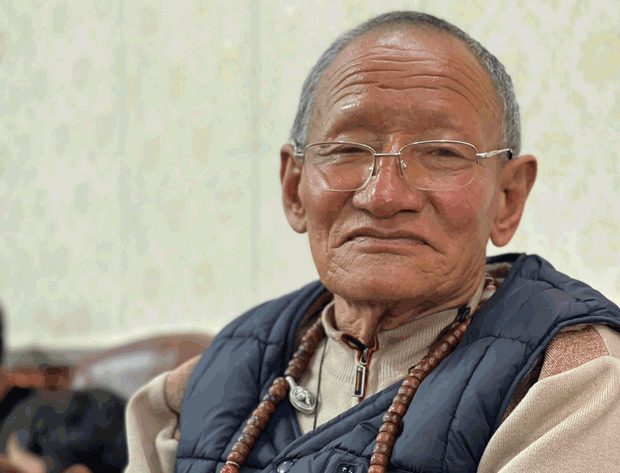Original article: Radio Free Asia
Author: RFA's Tibetan Service
The burning death in Sichuan is the 160th known self-immolation in Tibetan regions since 2009.
An 81-year-old Tibetan man has died after a self-immolation protest over Chinese rule, setting himself on fire last week at a police station in front of a major monastery in the western Chinese province of Sichuan, a source from the monastery’s branch in India told RFA late Saturday.
The burning death on March 27 of a man identified as Taphun raises to 160 the number of Tibetans confirmed to have set themselves on fire since 2009, nearly all to protest Chinese rule in the Tibetan Autonomous Region, as well as historically Tibetan areas of Sichuan and Qinghai provinces.
“On the 27th of March, around 5 o’clock in the morning, 81-year-old Taphun self-immolated in front of a police station near Kirti Monastery in a protest against the Chinese government’s oppression,” said Kanyak Tsering, a spokesman at the monastery’s branch in Dharamsala, India, home to the Tibetan government in exile and the Dalai Lama.
“He was immediately taken away by the Chinese police. Though it’s been a few days since we learned about this incident, now it is confirmed that he has passed away,” the spokesman told RFA’s Tibetan Service.
The 550-year-old Kirti Monastery lies in Ngaba (in Chinese, Aba) Tibetan Autonomous Prefecture in Sichuan Province, part of what was formerly the Amdo region of Tibet before it was absorbed by China.
“The place where Taphun self-immolated is in front of the police station that is right outside Kirti Monastery’s entrance,” said Tsering.
“March is usually a very sensitive month for Tibetans and we have often seen many Tibetans in Ngaba self-immolate in the past,” the exile Kirti spokesman noted.
“There are more restrictions and police presence around this time than usual and Tibetans are often arbitrarily interrogated by the Chinese police,” he added.
March 10 is Tibetan Uprising Day, the date in 1959 of a failed armed rebellion against Chinese rule that resulted in a violent crackdown on Tibetans that drove the Dalai Lama across the Himalayas into exile in India.
Although disclosed on April 2, the Kirti incident took place three days before the most recent known self-immolation–that of a man, known only as Tsering, who set himself ablaze in front of a Chinese police station near a Buddhist monastery in Kyegudo (in Chinese, Jiegu), in Yushul (Yushu) Tibetan Autonomous Prefecture in Qinghai. His fate and other details remain unknown.
Sporadic demonstrations challenging Beijing’s rule over what was an independent nation until China’s invasion in 1950 have continued in Tibetan-populated areas of China since widespread protests swept the region in the run-up to the 2008 Beijing Olympics.
High-technology controls on phone and online communications in Tibetan areas often prevent news of Tibetan protests and arrests from reaching the outside world, and sharing news of self-immolations outside China has led to jail sentences.
Chinese authorities maintain a tight grip on the Himalayan region, restricting Tibetans’ political activities and peaceful expression of ethnic and religious identity, and subjecting Tibetans to persecution, torture, imprisonment, and extrajudicial killings.
Translated by Tenzin Dickyi for RFA’s Tibetan Service. Written in English by Paul Eckert.

